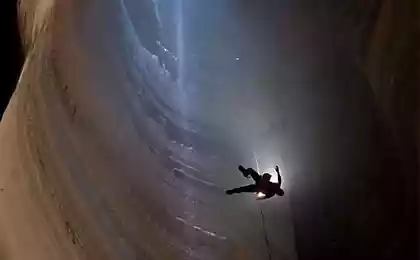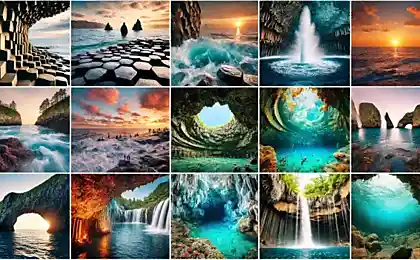504
The oldest cave paintings in the Chauvet cave+Video
Chauvet cave in southern France where the oldest known cave paintings, was included in the List of UNESCO world heritage site, declared a UNESCO Committee in Doha (Qatar).

Being locked 23000 years after the fall of the rock, the cave was discovered in 1994 by three speleologists — Jean-Marie Chauvet, Eliet Brunel and Christian Illarum, reports 7sur7.be according to Agerpres. It was found more than a thousand drawings, "a wonderful expression of the first artistic creations of man", Dating from upper Paleolithic (34 century BC). We are talking about "the oldest known images of figures of living beings in the world," says the decision of the Committee.Huge cave located at a depth of 25 meters, on the limestone plateau in the South of France, is a "unique and very well-preserved testimony," the first manifestations of human genius, says the decision of the Committee. Archaeological, paleontological and cave paintings in Chauvet the best way to show the fact that the caves in the Paleolithic was used for cultural and ritual practices, adds the Committee of a UN Agency for education, science and culture.

The petroglyphs represent animals 435 14 species: bears, woolly rhinoceroses, lions, lionesses, Panthers, bisons, etc. There are images of hands on the back of the cave, drawing the lower part of a woman's body next to bison.
According to the news.com.au, only three people have access to the cave, the entrance is closed armored door weighing half a ton.
From next year the public will be able to admire a perfect replica of the caves, made near the original. 8500 square feet of original caves have been cut in copies of up to three thousand square meters, but all of the outstanding drawings were reproduced with millimeter accuracy on the previously scanned originals.
The cost of the entire operation is 55 million Euro, money allocated by the French government and the European Union.
source:ecology.md
Source: /users/1077

Being locked 23000 years after the fall of the rock, the cave was discovered in 1994 by three speleologists — Jean-Marie Chauvet, Eliet Brunel and Christian Illarum, reports 7sur7.be according to Agerpres. It was found more than a thousand drawings, "a wonderful expression of the first artistic creations of man", Dating from upper Paleolithic (34 century BC). We are talking about "the oldest known images of figures of living beings in the world," says the decision of the Committee.Huge cave located at a depth of 25 meters, on the limestone plateau in the South of France, is a "unique and very well-preserved testimony," the first manifestations of human genius, says the decision of the Committee. Archaeological, paleontological and cave paintings in Chauvet the best way to show the fact that the caves in the Paleolithic was used for cultural and ritual practices, adds the Committee of a UN Agency for education, science and culture.

The petroglyphs represent animals 435 14 species: bears, woolly rhinoceroses, lions, lionesses, Panthers, bisons, etc. There are images of hands on the back of the cave, drawing the lower part of a woman's body next to bison.
According to the news.com.au, only three people have access to the cave, the entrance is closed armored door weighing half a ton.
From next year the public will be able to admire a perfect replica of the caves, made near the original. 8500 square feet of original caves have been cut in copies of up to three thousand square meters, but all of the outstanding drawings were reproduced with millimeter accuracy on the previously scanned originals.
The cost of the entire operation is 55 million Euro, money allocated by the French government and the European Union.
source:ecology.md
Source: /users/1077
New technologies in the service of the tourist is ready to stay alone
Whiten teeth with strawberries























